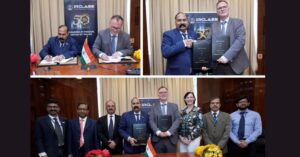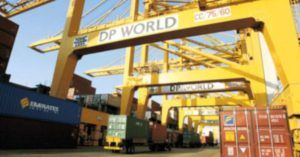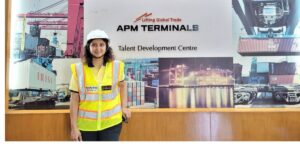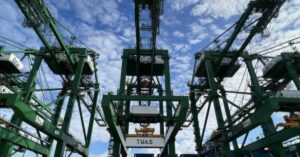The govt is thinking of relaxing cabotage law, so how do you see this move. On one side the ministry is promising or working vigorously to increase the port capacities, time and gain they say Indian tonnage has to go up and then vis-à-vis again they say cabotage relaxation, which obviously the trade feels that it is in favor of foreign shipping lines. In this scenario, what’s INSA’s view and your opinion?
Cabotage is always the elephant in the room. So, it is better we deal with that at the outset itself. The first thing that I keep telling the government, and I am going to use your forum to also spread the word, when people will say, or the governments say and news items say that India will do away with cabotage. My counter question is what will you remove? There is no cabotage in India. What I find sadly is that conversations on this happen without any research and without any effort to look at data.
Somebody in some newspaper gets up to write that government intends to relax cabotage, then everybody else starts following that and nobody takes the effort to go and ask the ministry. So the first question I want to ask you is has anybody seen anyone in the ministry saying that they want to relax some rule that is going to change way the cargo is moving – nobody – there is no statement from the ministry which says that they want to make any changes in any way the transpiration of cargo will happen. Coming back to cabotage, there is no cabotage in shipping.
Why in the world do people see that cabotage is being done away? Cabotage exists in our airline trade, for example British Airways cannot move a passenger from Mumbai to gully, if they so desire, even if their cost is lower you need to have an Indian Airline company to be able to move people within India – that is cabotage. Ask yourself does that rule apply to movement of cargo – no. In fact, close to 60 per cent of India’s coastal cargo is carried by foreign ships. Is there a restriction to use foreign ships – there is no restriction. All that the government says is that, before using a foreign ship, check if an Indian is available and give them cargo. So all that Indian ships have is a right of refusal and there is therefore, no cabotage.
Now, what are the impacts on the Indian tonnage, the only thing that Indian tonnage gets today is right of first refusal. Is there any conversation from the ministry saying that we are going to remove this right of first refusal, I have not seen any? In fact, as late as last week, the government has now granted the right of first refusal to vessels, which are registered in the International Financial Services Centers Authority (IFSCA). We have been working very strongly with IFSCA to promote offshore entities to come in and invest. As INSA we have been at the forefront to say foreigners must come and invest in India. We have been perhaps the most progressive industry associations, which invite foreigners to come into India.
How the Right of first refusal (ROFR) is helping the Indian tonnage?
The intention of the ROFR is that if you want to move cargo from location A to location B, you can take quotation from all ship owners worldwide. Let us, assume you get a rate which is lowest rate from a flagship then you require to offer the same rate to an Indian flagship. Then you can ask Indian flagship if it can move the cargo at that rate. If an Indian ship can do that then it will get a right to move that cargo. However, has it helped Indian flagships – to a great extent it has not. Let me tell you why it has not helped us. The whole issue is about the fact you can import a shipping service to India without a payment of any duty or cost. If I want to import steel into India there is a countervailing Customs duty on import of it. If I want to import an accounting service from a foreign company, there is a GST and a tax that makes it non-competitive, and you would rather go to a local company to take that service. However, in shipping you are freely allowed to import shipping services. Now the cost of operation of an Indian flagged vessel versus foreign flagged vessel is what one needs to see. Therefore, if an Indian company was moving cargo from say Abu Dhabi to India and a foreign vessel was moving cargo from Abu Dhabi to India, and the vessels were exactly the same. Then, if the cost of the operation of the foreign=flagged vessel is Rs 100, while the cost of operation of Indian-flagged vessel is Rs 119.22 paisa. Now the next question that comes up is what can anybody do if you are inefficient?
Absolutely, I agree, but what this extra Rs 19.22 paisa has nothing to do with operations. These are duties and taxes that Indian companies pay in respect of Indian cost if one can call it so. Therefore, what is important is not just having an ROFR, but to ensure that there is a level-playing field between Indian ships and foreign ships competing for the same cargo.
There is disparity in cost of operations between Indian and foreign flagged ships. So, what needs to be done to bring a parity is to either tax the import of the service from foreign vessels, or free Indian-flagged vessels from the taxation.
There are a lot of taxes which Indian-flagged ship owners pay. If one buys a vessel brings her into India, on the first time she comes into India, a tax of 5% IGST is levied on the value of the vessel, while the foreigner ship can come to do exactly the same business, carry the same cargoes in port do nothing any different and yet they do not pay IGST on the vessel. That is the biggest stumbling block for investment in India vessels.
You have been voicing these concerns for a long time what is the response from the ministry? What is keeping them not being very proactive in promoting Indian tonnage in true spirit?
One primary issue I that these issues which today cause this disparity in taxation or duties is something that lies outside the ministry of shipping. Within the ministry of shipping whatever needs to be done has been done. Last week I was with somebody who wanted to come in and register a vessel in India. And I am very proud to say this that we registered the vessel in India at Mumbai registrar within 24 hours. I have not seen even foreign-flagged vessels getting registered in that short span of time. So, to that extent a lot of hard work has been done by our ministry, and DG Shipping. The issues which exist are outside the purview of ministry, and the ministry does try to make efforts.
For example, the major issue we did get some benefit was on the taxation of seafarers. So now while taxation outside India is not applicable to Indian seafarers, yet we continue to suffer from the fact that if a seafarer works on Indian flag, then there is a duty or responsibility cast on me as an employer to deduct tax at source. That responsibility is not imposed on foreign ship owner who is employing Indian seafarer. Therefore, an Indian seafarer naturally wants to go and work with a foreign ship owner. And these disparities need to be settled, we have therefore initiated conversations with our own ministry and we have been ensured that they would assist us.
As soon as we take the issue, our ministry swings into action. But at the end of the day, it is the decision of the Finance Minister, which has to see some logical connection between the growth of India, its ability to provide shipping services, and the fact that India needs to make its shipping competitive.
In your earlier response you mentioned about IFSCA, a new regime which is coming up in the GIFT City. Initially there were apprehensions how this would work. How do you look at these options?
These are excellent options, the IFCA has a wonderful structure in respect of ship leasing. My understanding is that three vessels have already got registered through IFSCA entity at GIFT City. These bring a lot of benefits. Having in IFSCA is akin to being a non-resident in a legal fiction way. Vessels which are registered in the IFSCA are not subject to GST, they do not have to pay Customs duty on import of the ships like some of the ships that we have to do in the DTA. These vessels are also granted 10 years tax holiday. These benefits given by IFSCA will slowly help in creating an ecosystem where people instead of registering their vessels in tax regimes and tax-friendly regimes like Singapore or UAE etc will now want to register vessels under the GIFT City. Because there is very little difference in tax if a ship was registered in Singapore versus registered under the GIFT city. We believe that GIFT City holds out a great scope for that, but I think more importantly for the purposes of creating a ship leasing entity they have a wonderful framework, which is equivalent to whatever is available outside the places like Hong Kong and Singapore. I believe there is no withholding tax on lease rents that are paid.
Does it allow at least to compete or come closer to the foreign ships for getting the cargo?
Yes, what happens is because these are vessels which are not subjected to any tax or duties etc unlike the Indian ships that I have spoken about. What has been done is that these vessels have been put between the vessels in the DTA – that is the normal ships and the foreign-flagged ships. What we now have is that the DTA vessels. If a DTA vessel does not exercise ROFR the Gift City vessel can exercise ROFR only after both of those have been exhausted then a foreign vessel can get right to that cargo.
This is a great way it is not only making it competitive with Singapore etc. but the govt has also thrown in this thing saying that if you come and invest here, we will give you a right over Indian cargo. Of course, after the DTA ships because at the end of the day DTA ships pay taxes, duties and they employ Indian seafarers, and they provide tonnage tax training to cadets, etc. So lieu of that you get second right of refusal, but they get second right of refusal over foreign-flagged ship. I think it’s a great opportunity and people must look at this.
What is your take on the growth in coastal movement in cargo? Are we really growing at the pace that we intend to do?
It is not at all satisfying to see the miniscule growth that we are achieving on the coastal route. One cannot be satisfied with the kind of growth that we are seeing on the coastal route. This growth is simply incremental.
Why is more cargo not coming towards the sea? First thing is that India has a large hinterland; therefore sometimes it is easier to move cargoes straight across hinterland rather than land-sea and land route. The second is economics, even if you see at land-sea-land route today you compete with road and rail, therefore what is important is to ensure that this whole first mile, sea and last mile all of this put together is cheaper than moving in directly by road or by rail. Today, railways are getting extremely efficient and one is finding that where shipping is carrying cargo along the coast the railways have also jumped in and offered better rates to compete with shipping.
Lack of demand is another point, there is no new cargo that is coming on these routes. We have been traditionally carrying cement, tiles, marble, soda ash, and this seems to be standard cargo that is continuing to move on the coastal route. Few years ago we used to see some wind mills moving that have completely stopped. The major issue is the lack of demand and why there is a lack of demand is because people are finding it more attractive to use the rail route or the road for direct deliveries.
The other thing is that shipping has a lot of more burdens on it, in respect of compliance of international rules. Today we are being asked to put energy saving devices, we are being asked to paint our hull all of this we are doing in order to reduce our carbon emission. Amongst the three routes used within India we are the most efficient yet we are taking steps to do all of that. For that there is a need to ensure govt promotes the use of ships because you are extremely low in carbon compared to road and rail and there is no debate in that. But we believe that there is need for govt of India to now start coming up with schemes which will promote use of low carbon methods of transportation and once this carbon credits etc. kick in one will find that there will be a sudden spurt of movement towards costal cargo.
Recently ministry of shipping has announced that they would retire some of the aged ships and trade appreciated the move. So, what is the scenario?
One of the extremely forward-thinking steps taken by the Ministry of shipping and DG Shipping was to announce that we will now welcome younger ships this will ensure that our own emissions will reduce because younger ships will have energy saving devices. They will also come up with complying with EEXI, EEDI and CII norms. All these things will definitely impact the tonnage positively.
We are engaged with the govt and Ministry of shipping for funding. And the ministry ha recently held two meetings to try and work out funding is available to invest on new ships. One important push that we are making is the attempt to get shipping designated as infrastructure.
In India ports were designated as infrastructure rails too were infrastructure, but railway wagons and ships are not infrastructure, however recently the govt of India has declared railway wagons as infrastructure. We have made a representation to the ministry of Finance and depart of infrastructure to consider shipping as an infrastructure. Why that will help because once we are infrastructure wo would then have access to long term funds and we would have access to low-cost funds, which will help us buy second hand younger ships and help build ships in India. A lot of my members today are operating tugs built in India. We would proudly be operating only made in India tugs starting from next year.
We believe infrastructure tag for shipping will help us fund our acquisition, modernization and the program to meet decarbonization.
You have been in thick of matters almost for two and a half decades when you look at a macro level how do you see the growth of Indian maritime industry and what is the future look like in terms of investment?
As far as investment is concerned the Indian tonnage despite having all these problems has grown steadily. Just to throw some figures as of April 2023 compared June or July of previous year bulk activity has grown by 5 per cent crude takers by about 3 per cent, product tankers have grown by about 4.5 per cent. LPG has shown a healthy growth of 6 per cent. So, you can see there is a growth and there is push to acquiring more tonnage.
We are also proud to say that we have had a lot of investments coming in Mitsu OSK Lines formed a company in India and has flagged vessels in India. BW Gas who are leading gas operators have come into India and flagged vessels in India. So, people seeing the value of coming in and parking vessels in the Indian fleet. For that a large amount of credit must go to DG Shipping for all efforts that they are taking. Therefore, we believe that we will continue to grow however, what has to be borne in mind is that unlike other sectors shipping undergoes a cycle, and right now shipping is at a heat. So, values are at almost lifetime high and therefore this is a bad time to buy ships. That is why we keep telling the govt also that in this period people only buy tonnage that is needed to replace or meet certain direct requirements. LPG trade is one trade where India is growing and will continue to have a demand. There is a huge demand for FOBs, about 30 per cent of that demand is carried by PSUs, but still there is about 70 per cent of space available for Indian flag investment. There is also scope for investment in bulk carriers to carry coal and fertilizers which have huge demand for import in to India.












